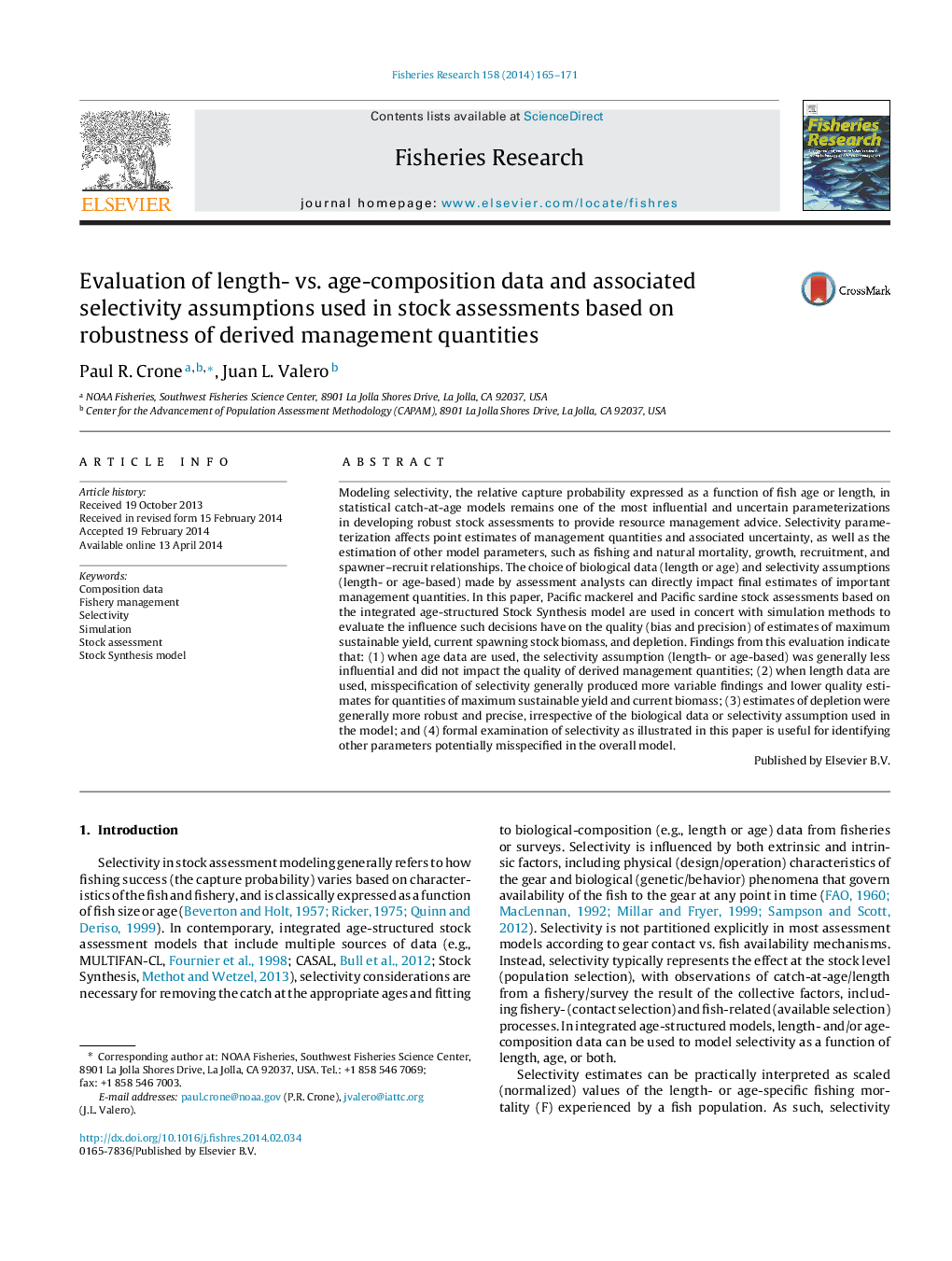| کد مقاله | کد نشریه | سال انتشار | مقاله انگلیسی | نسخه تمام متن |
|---|---|---|---|---|
| 4543009 | 1626810 | 2014 | 7 صفحه PDF | دانلود رایگان |
عنوان انگلیسی مقاله ISI
Evaluation of length- vs. age-composition data and associated selectivity assumptions used in stock assessments based on robustness of derived management quantities
ترجمه فارسی عنوان
ارزیابی داده های طول و سن ترکیب و فرضیه های مربوط به انتخابی که در ارزیابی های سهام استفاده شده اند بر اساس استحکام مقادیر مدیریت مشتق شده
دانلود مقاله + سفارش ترجمه
دانلود مقاله ISI انگلیسی
رایگان برای ایرانیان
کلمات کلیدی
داده های ترکیب مدیریت ماهیگیری، انتخابی، شبیه سازی، ارزیابی سهام، مدل سنتز سهام،
موضوعات مرتبط
علوم زیستی و بیوفناوری
علوم کشاورزی و بیولوژیک
علوم آبزیان
چکیده انگلیسی
Modeling selectivity, the relative capture probability expressed as a function of fish age or length, in statistical catch-at-age models remains one of the most influential and uncertain parameterizations in developing robust stock assessments to provide resource management advice. Selectivity parameterization affects point estimates of management quantities and associated uncertainty, as well as the estimation of other model parameters, such as fishing and natural mortality, growth, recruitment, and spawner-recruit relationships. The choice of biological data (length or age) and selectivity assumptions (length- or age-based) made by assessment analysts can directly impact final estimates of important management quantities. In this paper, Pacific mackerel and Pacific sardine stock assessments based on the integrated age-structured Stock Synthesis model are used in concert with simulation methods to evaluate the influence such decisions have on the quality (bias and precision) of estimates of maximum sustainable yield, current spawning stock biomass, and depletion. Findings from this evaluation indicate that: (1) when age data are used, the selectivity assumption (length- or age-based) was generally less influential and did not impact the quality of derived management quantities; (2) when length data are used, misspecification of selectivity generally produced more variable findings and lower quality estimates for quantities of maximum sustainable yield and current biomass; (3) estimates of depletion were generally more robust and precise, irrespective of the biological data or selectivity assumption used in the model; and (4) formal examination of selectivity as illustrated in this paper is useful for identifying other parameters potentially misspecified in the overall model.
ناشر
Database: Elsevier - ScienceDirect (ساینس دایرکت)
Journal: Fisheries Research - Volume 158, October 2014, Pages 165-171
Journal: Fisheries Research - Volume 158, October 2014, Pages 165-171
نویسندگان
Paul R. Crone, Juan L. Valero,
